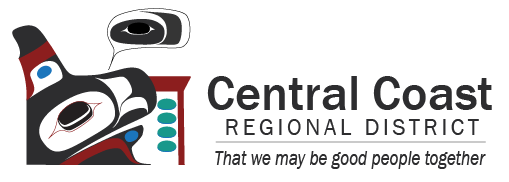CENTRAL COAST REGIONAL DISTRICT BELLA COOLA VALLEY OFFICIAL COMMUNITY PLAN BYLAW NO. 302, 1998
A bylaw to adopt the Official Community Plan for the Bella Coola Valley.
WHEREAS, pursuant to Section 875 of the Municipal Act the Regional Board may have community plans prepared or revised from time to time;
AND WHEREAS, pursuant to Section 875 of the Municipal Act the Regional Board may prepare an official community plan for areas outside of a municipality;
NOW THEREFORE, the Regional Board of the Central Coast Regional District in open meeting assembled, ENACTS AS FOLLOWS:
- This Bylaw may be cited for all purposes as the "Bella Coola Valley Official Community Plan Designation Bylaw No. 302, 1998"
- Schedules 1, A, B, C, and D attached hereto to the Bylaw form an integral part of the Bylaw.
- If an action, a section, a subsection, clause or phrase of the Bylaw is for any reason held to be invalid or illegal by the decision of any court of competent jurisdiction, such decision shall not affect the validity of the remaining section, subsection, sentences, clauses or portions of this bylaw.
- Bella Coola Valley Official Settlement Plan Bylaw No. 85, 1985 and amendments thereto is hereby repealed.
READ a first time this 13th day of May , 1998.
READ a second time this 13th day of May , 1998.
PUBLIC HEARING held this 13th day of , 1999.
READ a third time this day of , 1999.
APPROVED BY THE MINIISTER OF MUNICIPAL AFFAIRS, RECREATION AND HOUSING this day of , 1999.
RECONSIDERED, FINALLY PASSED AND ADOPTED by the Regional Board of the Central Coast Regional District this day of , 1999.
Chairman of the Board Administrator I, Donna Mikkelson, Administrator of the Central Coast Regional District certify that this is a true and current copy of Bylaw No. 302 of the Central Coast Regional District cited as "Bella Coola Valley Official Community Plan Designation Bylaw No. 302, 1988".
Donna Mikkelson
TABLE OF CONTENTS
- INTRODUCTION
- 1.1 What is an Official Community Plan? .............. 1
- 1.2 What a Plan Can and Cannot ....................... 1
- 1.3 The Official Community Plan Update ............... 1
- 1.4 Who has Been Involved in the Planning Process .... 2
- 1.5 Planning Area ...................................2
- 1.6 First Nations Lands .............................. 2
- VISION FOR THE BELLA COOLA VALLEY
- 2.1 General .......................................... 3
- 2.2 Fundamental Approach ............................. 3
- 2.3 Context for the Vision ........................... 3
- 2.4 Key Features of the Vision ....................... 4
- 2.5 Concluding Comments .............................. 5
- POLICY FRAMEWORK
- 3.1 General .......................................... 6
- 3.2 Residential Development .......................... 6
- 3.3 Commercial Development ........................... 8
- 3.4 Industrial Development ........................... 9
- 3.5 Agriculture and Forestry ......................... 10
- 3.6 Public, Institutional and Recreational ........... 12
- 3.7 Natural Hazards .................................. 13
- 3.8 Natural Environment .............................. 14
- 3.9 Transportation ................................... 16
- 3.10 Utilities ....................................... 17
- IMPLEMENTATION
- 4.1 Subdivision servicing and Zoning bylaw ........... 18
- 4.2 Agency Liaison ................................... 18
- 4.3 Siting and Use Permits ........................... 18
Schedule A - Land Use Map
Schedule B - Hazard Land Map
Schedule C - Environmentally Sensitive Areas Map
